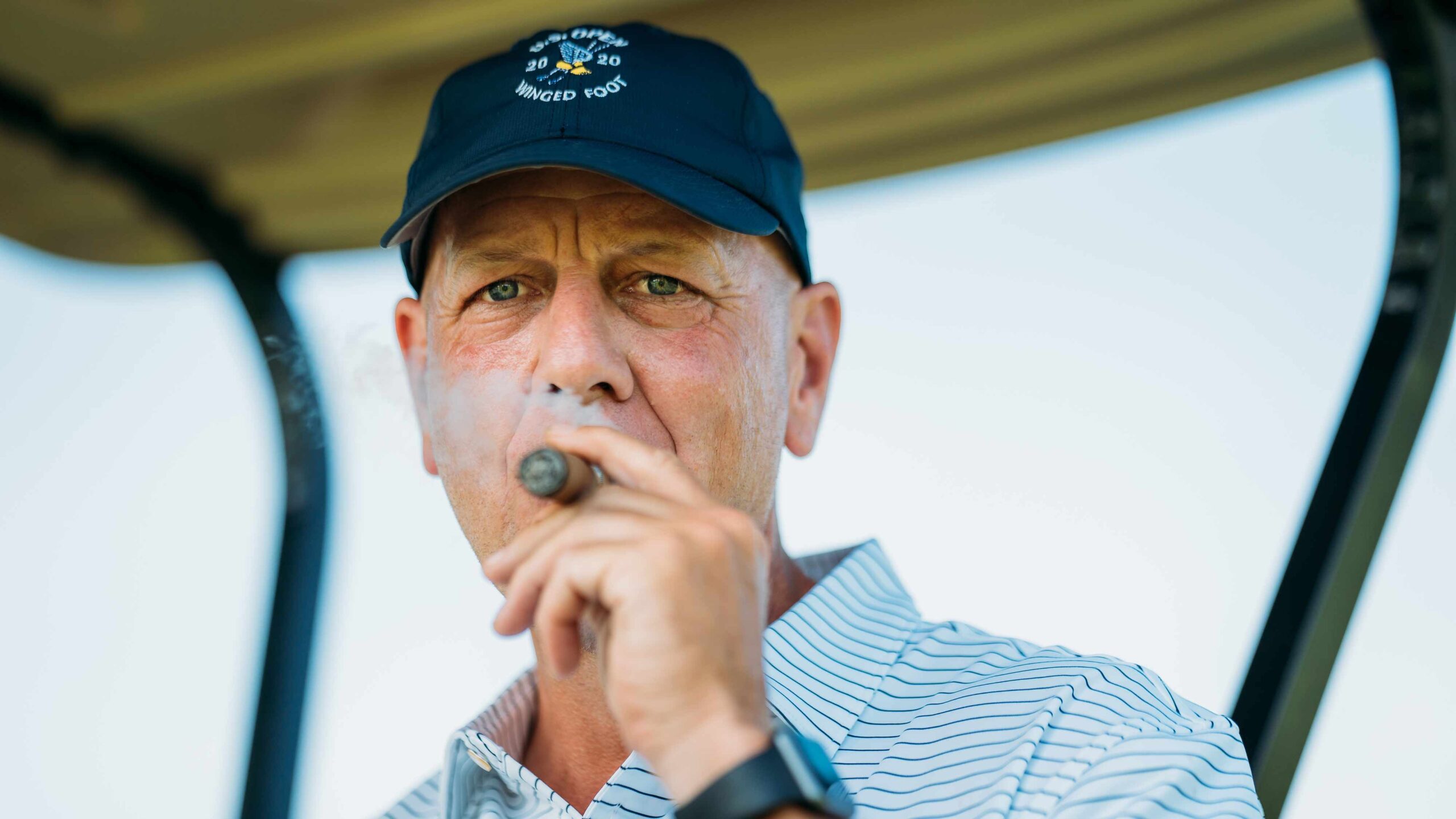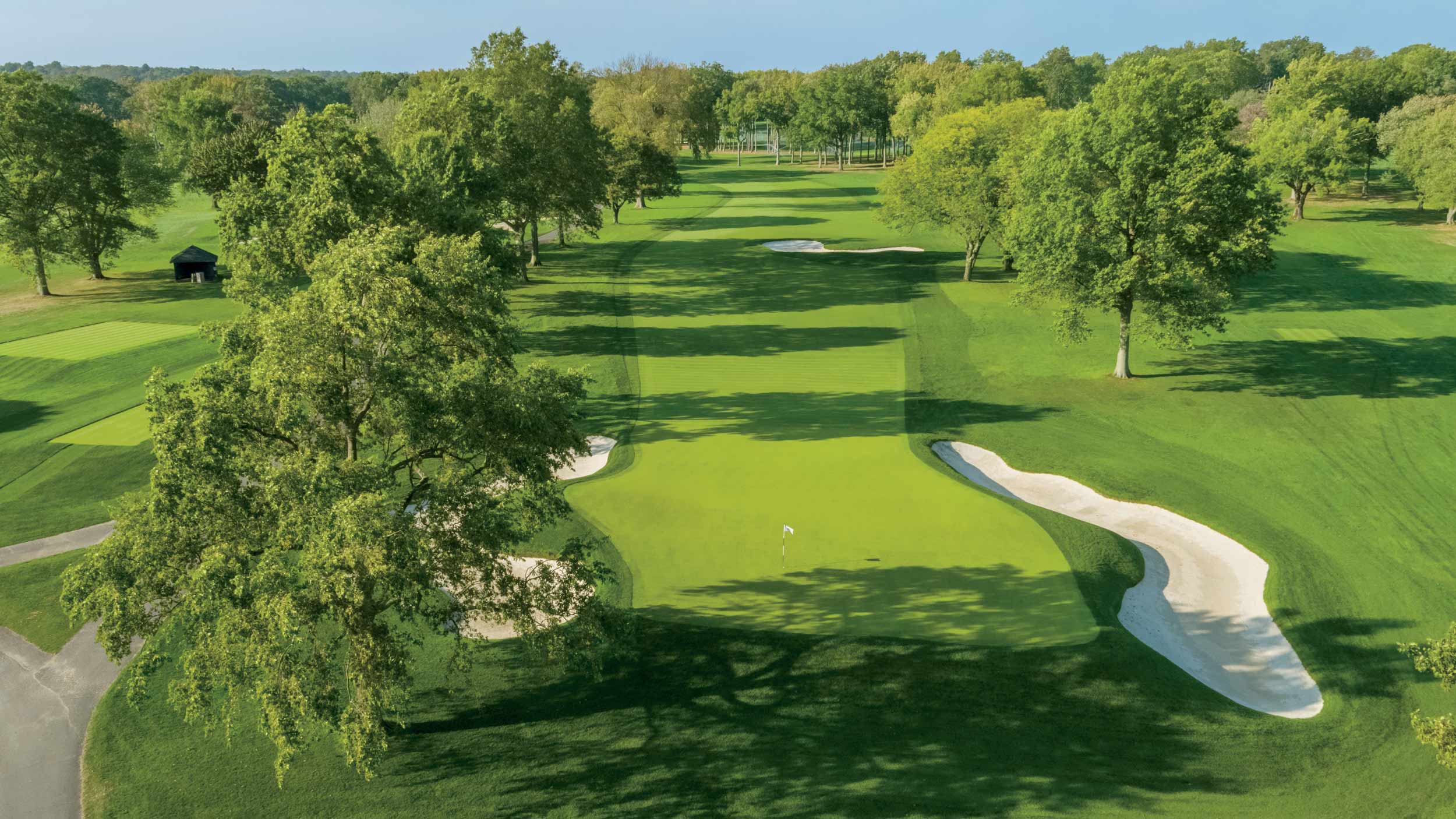This is the fifth and final installment of The Road to Winged Foot, powered by Cisco Webex, in which we’re highlighting how players, officials, broadcasters and others are preparing for the 2020 U.S. Open unfolding this week at Winged Foot Golf Club in Mamaroneck, N.Y. Part I: Winged Foot Open champions on how to win there. Part II: A U.S. Open dark horse. Part III: Viktor Hovland’s Winged Foot game plan. Part IV: What’s in store for U.S. Open viewers.
***
It’s hard to imagine many people in the golf world work harder than Steve Rabideau, Winged Foot’s director of golf courses, who doesn’t remember his last day off. But if someone can be simultaneously wearied and energized, it’s Rabideau this week. Playing host to the U.S. Open is, in many ways, the culmination of years of work; he was elemental in the West course‘s redesign and he’s been in charge of getting it prepped. His golf course is in the spotlight, and he wants it to shine.
Before we get to the energizing bit, let’s go through the wearying work. This year’s edition of America’s championship has faced unique challenges. For starters, Rabideau says, preparing a golf course for U.S. Open-style play would have been much easier in mid-June than mid-September.
“June is an ideal time to have a U.S. Open — it’s right before the start of the summer, the rough is super healthy, the grass really isn’t under stress yet,” he says.
Rabideau talks about grass the way parents might talk about their children. He’s worried about what it’s been through, battling through all of June, through one of the hottest Julys on record, through the dog days of August.
“August is never fun,” he says. “The grass is tired.”
Daylight, he says, is another issue. Sept. 20 means two fewer hours of light compared to the typical schedule, which lines up the event with the summer solstice. It poses many challenges with prepping a golf course in the light, he says, not to mention actually fitting in the golf.
Then you add in the complications of the coronavirus, which not only delayed the U.S. Open for several months but also reduced Winged Foot’s staff for a significant stretch. Through June 1, less than half of Rabideau’s crew was permitted to be on site. Even when he staffed up more fully in recent months, Rabideau says, fine-tuning the course is tough work.

“We’re babysitters,” he says. “The only way a golf course looks good is if you’re there all the time babysitting it.”
The hours don’t exactly get easier this week. Rabideau and his staff anticipate arriving around 3 a.m. and staying at the course until 9 or 10 p.m.
“It’s a lot, but it’s what we do it for. We’ll have an adrenaline rush and look — you’ve got the best players in the world playing your golf course. It’s pretty exciting.”
Let’s dive into that excitement! Rabideau says the members are eager to see the pros tested on the same golf course where they do day-to-day battle. They’re eager for Rabideau to keep it brutal.
“The members, the last month, have been playing basically U.S. Open conditions,” he says. “The rough has been thick and the fairway widths are the same. So the members have had a U.S. Open test for most of August and the first couple weeks of September. They’ve felt it — and I see them out there looking for balls all day long, so they’ve had a good test.”
The members at Winged Foot revel in the challenge of playing such a difficult golf course, to the point where Rabideau says he sometimes has a hard time making it hard enough to suit their fancies. I wonder aloud if Rabideau is worried by the scores we’ve seen pros post in recent weeks, with Dustin Johnson shooting 30 under at TPC Boston, for example. He doesn’t sound concerned.
“I think history has proven through time that Winged Foot is a classic U.S. Open venue,” he says. “It’s got narrow fairways, so the premise this week is going to be having to hit fairways. The rough will be penal. And you start talking about the green complexes — here, you have to be on the right side of the greens. If you miss long or left or right, it can make for some delicate chips.”
I press Rabideau for some predictions. What will the winning score be? The cut line? The highest number posted?
He takes a deep breath.

“Well, I’m going to have to go with history. Four out of five have been over par,” he says. “So you have to go with that, but we’ll see. You know, these guys are so good.”
It’s a sneaky hedge, and he avoids giving an exact number, but lovers of U.S. Open carnage will be glad to hear that the man in charge of the course thinks even the best pros will struggle to break par. He punts on the cut-line question, offering that it will be several shots over par but he’s not clear just how many.
As for the highest score posted?
“I think you should see somebody throw up a good mid- to high-80s score,” he says.
More than anything, Rabideau is eager for a championship that goes off smoothly, with cooperative weather, challenging golf and a happy membership.
“I hope that at the end of this, they’re happy,” Rabideau says. “And I hope we get to see some good golf. I look forward to Sunday watching golf with my team down at our shop and hopefully being able to kick back and watch a good finish.”
He and has team will have earned it.





